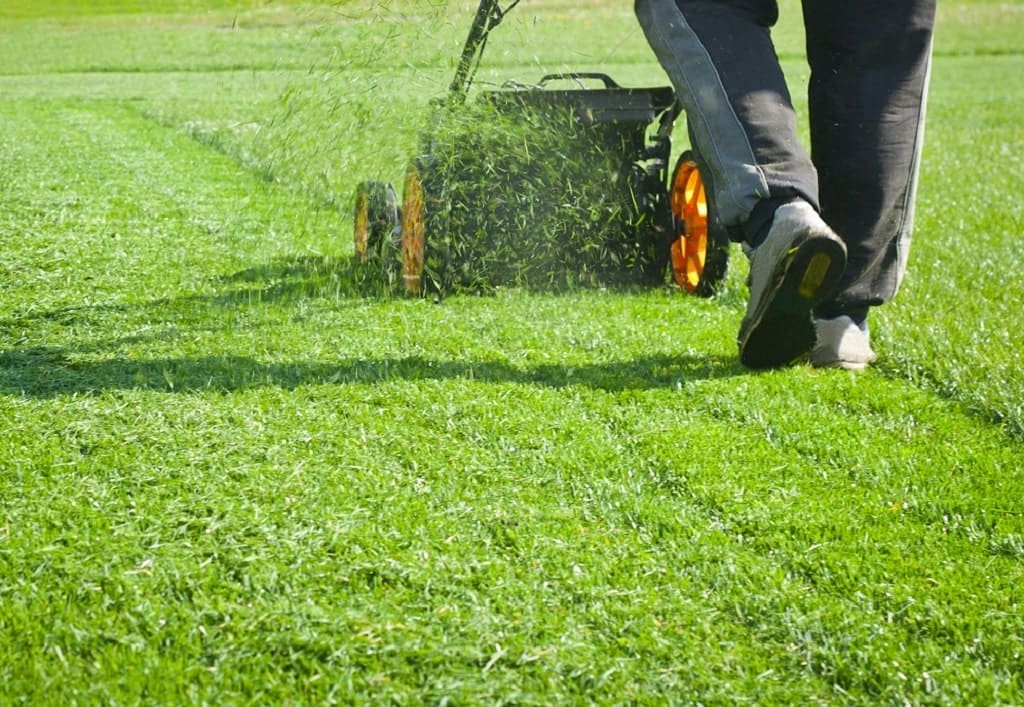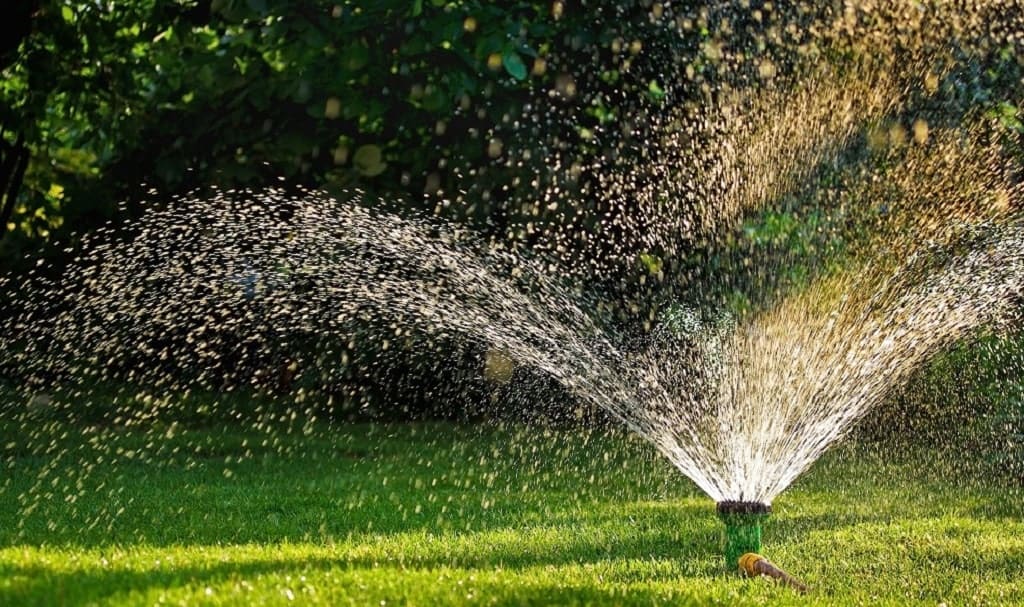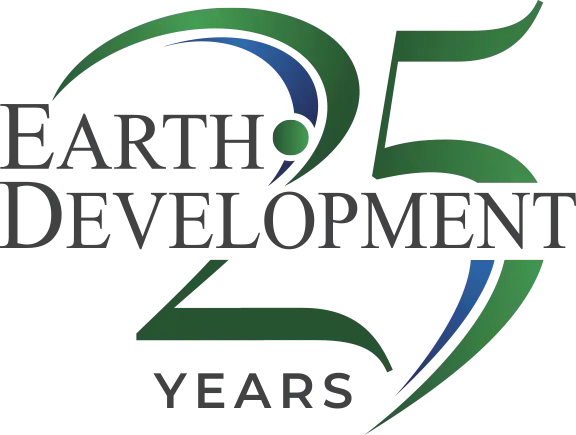As if the general heat that surrounds us during hot summer months isn’t enough, today’s global warming contributes to extreme heat conditions that are harsh on our lawns. Maintaining a lush lawn can be a chore during long heat waves – even more so if there are restrictions in your locale for how frequently you can water your lawn. Though the ideal stressed grass solution for Minneapolis and St. Paul residents is hiring expert landscaping services, here are some of our best tips for keeping your lawn lush and healthy during a heat wave.
Signs of Heat-Stressed Grass
Unsure if your grass is heat stressed? There are a few common signs that indicate you have a heat stressed lawn like soil compaction, grass discoloration, and footprints across your lawn.
Footprints Across Your Lawn
When you walk across your lawn, does the grass bounce back or can you still see your footprints? If you can see where you’ve walked, this is a clear sign of lawn stress that needs to be addressed immediately before the whole lawn dries out.
Grass Discoloration
This might be the most obvious indication of heat-stressed grass. If you notice your grass is starting to turn brown or straw-colored, either the tip or the whole blade, try watering your grass to see if it turns green again. If it does not, you might have another problem, like insects or disease, to name a couple.
Soil Compaction
Testing to see whether you have a stressed lawn is easy. Grab a tool, like a screwdriver or even a pen, and try to stick it into the soil. If it goes through easily, your lawn has enough moisture. However, if you encounter some resistance, heat stress might be a problem and you need to water more.
Mowing in Heat

Whether the hot weather is typical for your region or you are in the throes of extreme heat, there are several things you should keep in mind in order to maintain a healthy, intact lawn.
Don’t Cut Your Grass too Short
One of the most common mistakes made by homeowners and landscapers in lawn care is cutting grass too short. When a lawn is cut too short, it interferes with the grass’ ability to generate energy sufficient for growth. On the flip side, if grass is cut at the proper height, the roots are able to strengthen to support a more vigorous lawn that tolerates stress better. It is important to know that some types of grass have different growth habitats and their ideal mowing height should be taken into consideration, such as cool-season grass and warm-season grass types. 3 to 4 inches is a good height to keep your lawn during a heatwave.
Employ the One-Third Rule
Remember the one-third rule when trying to decide the proper height for mowing your grass. The one-third rule states that you never remove over one-third of the grass height at a time. This helps the lawn to stay cooler while removing less of the plant tissue. If an area of lawn is exceptionally high and you want to reduce its height by more than 1/3 of its current height, begin by mowing 1/3 and allow the grass to recover from mowing for a couple of days, then mow again.
Don’t Mow Grass in Drought
If your area is in drought, avoid mowing the lawn. Lawns often undergo much stress during drought and have a hard time recovering from mowing. This can contribute to further damage to your grass. Rather, mow after irrigation day or a rainfall. But also remember to avoid mowing wet grass to keep clumping at bay.
Sharpen Mower Blades
When a lawn is cut with sharp mower blades, healing takes place much faster. Dull blades actually tear the fibers and tissues in a plant rather than cutting it, which leads to more lawn damage and stress as well as disease risk.
Watering Your Lawn in a Heat Wave

Some people erroneously believe that the best way to maintain a lawn in extreme heat is to overwater. Remember that turfgrasses are better managed when they are dry as opposed to wet. If the soil is always wet, it can lead to many problems for plants and organisms within the soil. The roots in the grass will become oxygen-deprived and develop a higher risk of disease. Keep these tips in mind when watering your lawn.
Water Early
The best time to water your lawn is before 10 am. Cooler temperatures and subtle breezes help to keep evaporation slowed down. Early morning watering is also recommended as watering your lawn during hot parts of the day can add stress to your grass.
Water Deeply
Water enough to wet the roots and don’t water again until the grass has dried. You can eye it to determine if it is time to water again. If the grass looks dry, water it.
Don’t Water Daily
Lawns only need about one inch of water per week – so don’t water your lawn daily. That one inch of water includes rainfall!
Consider a Rain Barrel and/or Drip Irrigation
A rain barrel is an especially good idea for areas that prohibit the amount of local water supply you can apply to your lawn. You can then water with a bucket by hand or attach an irrigation system from there.
Drip irrigation systems are popular for lawns susceptible to hot summer conditions. This is often performed with a soaker hose that features holes down the length. When the hose is laid on the ground, it delivers water to the soil directly, keeping leaves dry and encouraging proper evaporation.
Aeration of Heat-Stressed Lawn
Wondering how to treat a heat stressed lawn if mowing properly and watering aren’t cutting it? Try aeration, either by yourself or with an experienced lawn aeration service. Aeration allows you to free up space for water, air, and other nutrients to reach the soil and the roots of the grass, leaving you with a lush, green lawn.
Conclusion
Maintaining a lawn can be a difficult task especially during long heat waves. Reach out to us at Earth Development and we will free you from these worries. For more than 20 years we have been providing landscaping and lawn maintenance services and are always ready to help you.
For more information, to get a free quote, or to speak to one of our friendly team members, don’t hesitate to get in touch! You can get a quote online, or give us a call!
